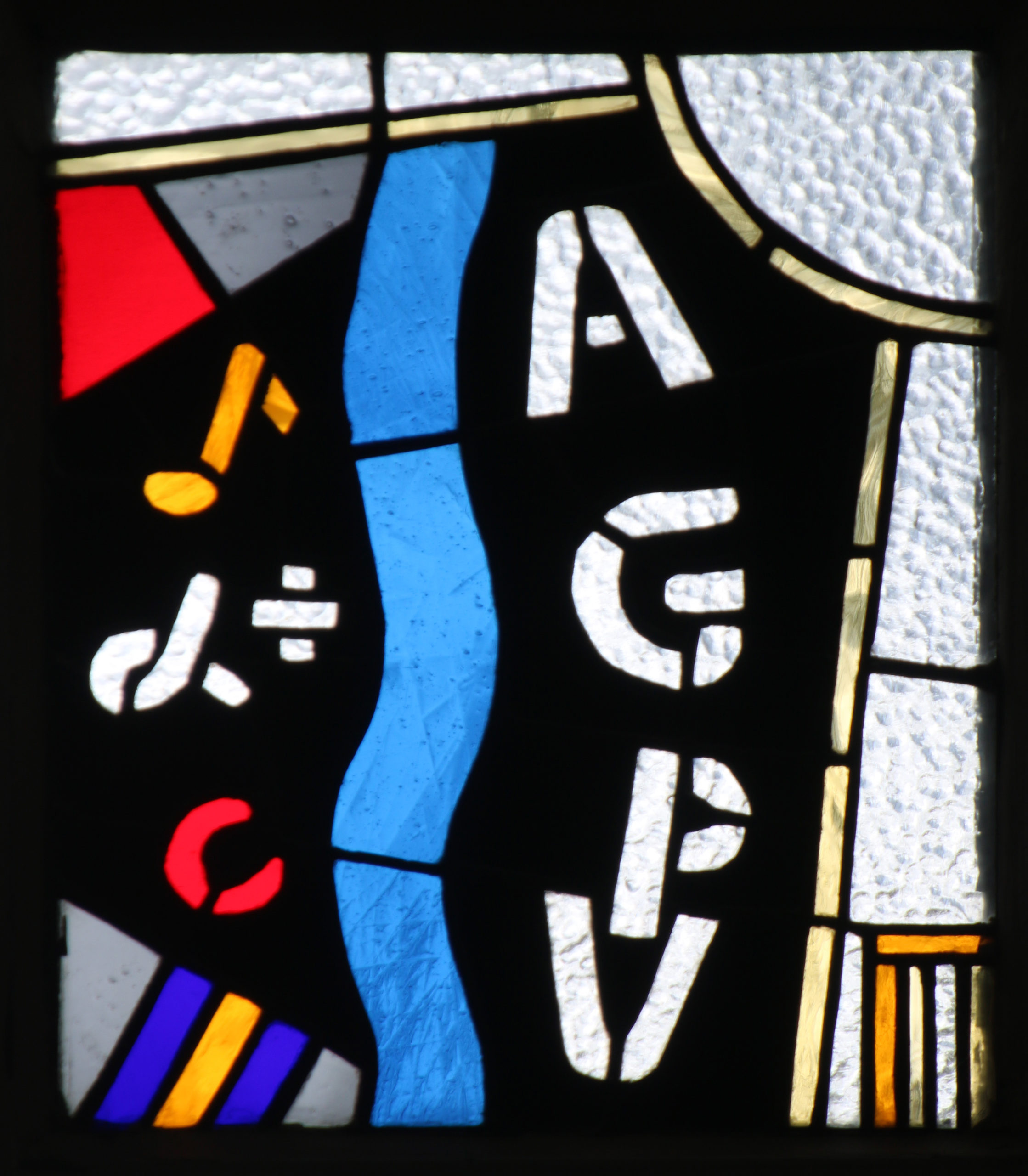This blog post is dedicated to Hazel Rossotti (1930-2023), who after her retirement designed and made the stained-glass panels now housed in the Library in Hartland House. Hazel was the Chemistry Fellow and Tutor at St Anne’s from 1961 until 1997, and before the appointment of a Biochemistry Fellow also oversaw that subject, as well as being the personal tutor for Fine Art students between 1977 and 1997.

For full descriptions and images of all the stained glass windows in Hartland House, please also visit our online exhibition:
Stained Glass
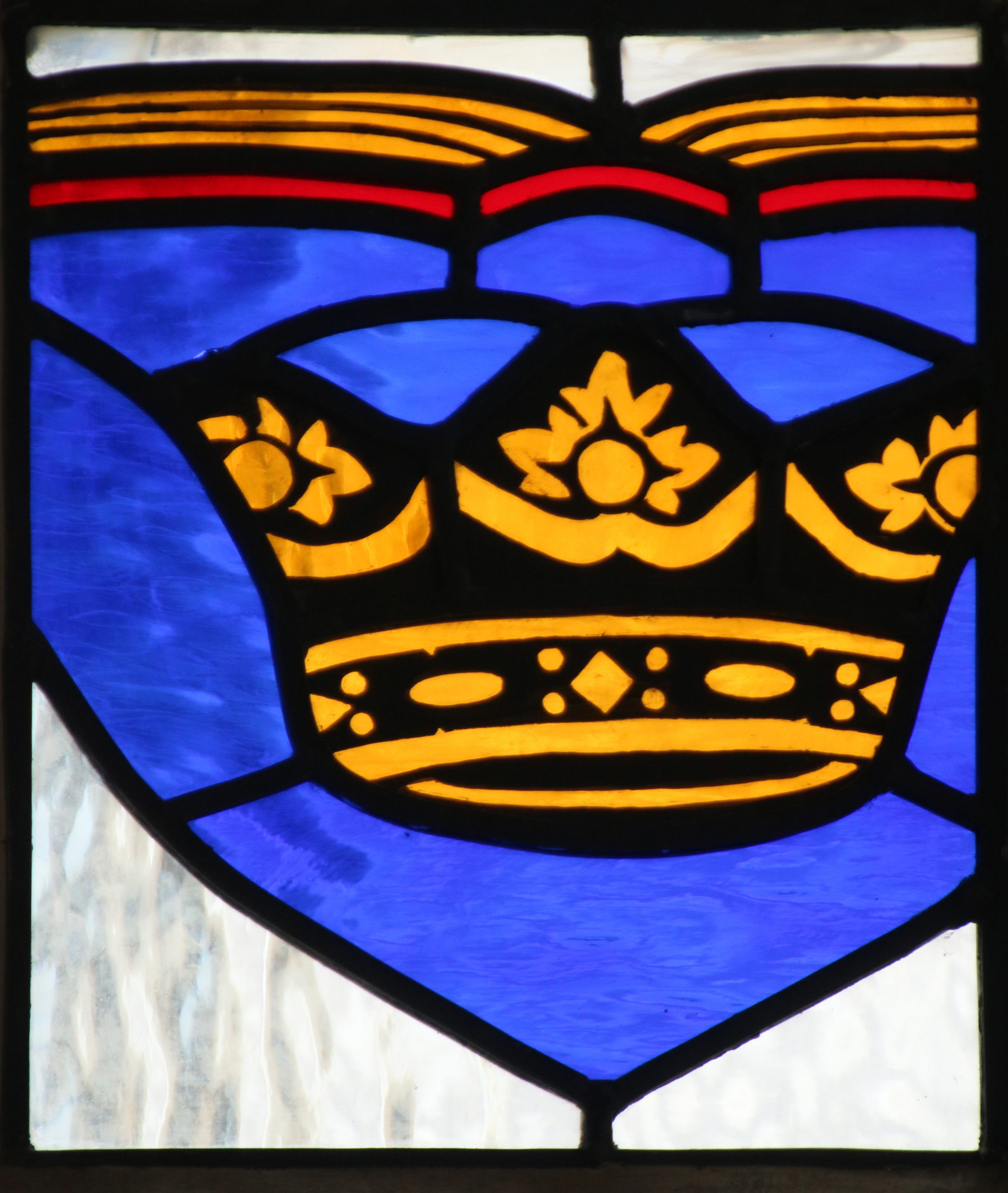
There are many fine examples of stained glass throughout the city of Oxford and particularly within the University, with windows in the chapels of some of the older colleges surviving from the medieval period, and an abundance of windows belonging to the Victorian Gothic Revival and Arts & Craft movements of the 19th Century.
Despite the foundation of the College in the later Victorian period, St Anne’s did not have a permanent home or its own buildings until the current site on Woodstock Road started to develop from the 1930s onwards, missing this heyday. English stained glass heritage is closely linked with religious buildings, and the College, being one of the few colleges of the University which does not have a chapel, might be expected to be comparatively lacking in stained glass. The Victorian houses on Bevington Road, which pre-exist the College, do contain domestic examples, but for most of its history the College did not possess any such glass of its own in purpose-built buildings.
In 1992, the College wished to decorate the newly-opened Claire Palley Building and designs submitted by Hazel Rossotti on the theme of the Elements were chosen. These are now featured surrounding the doorway at the entrance to the Mary Ogilvie Lecture Theatre in that building. This began Hazel’s long and fruitful journey with stained glass within the College, which would include designs in Trenaman House, also opened in the 1990s, and later significant additions to the Grade II-listed Hartland House of architect Giles Gilbert Scott.
The Artist
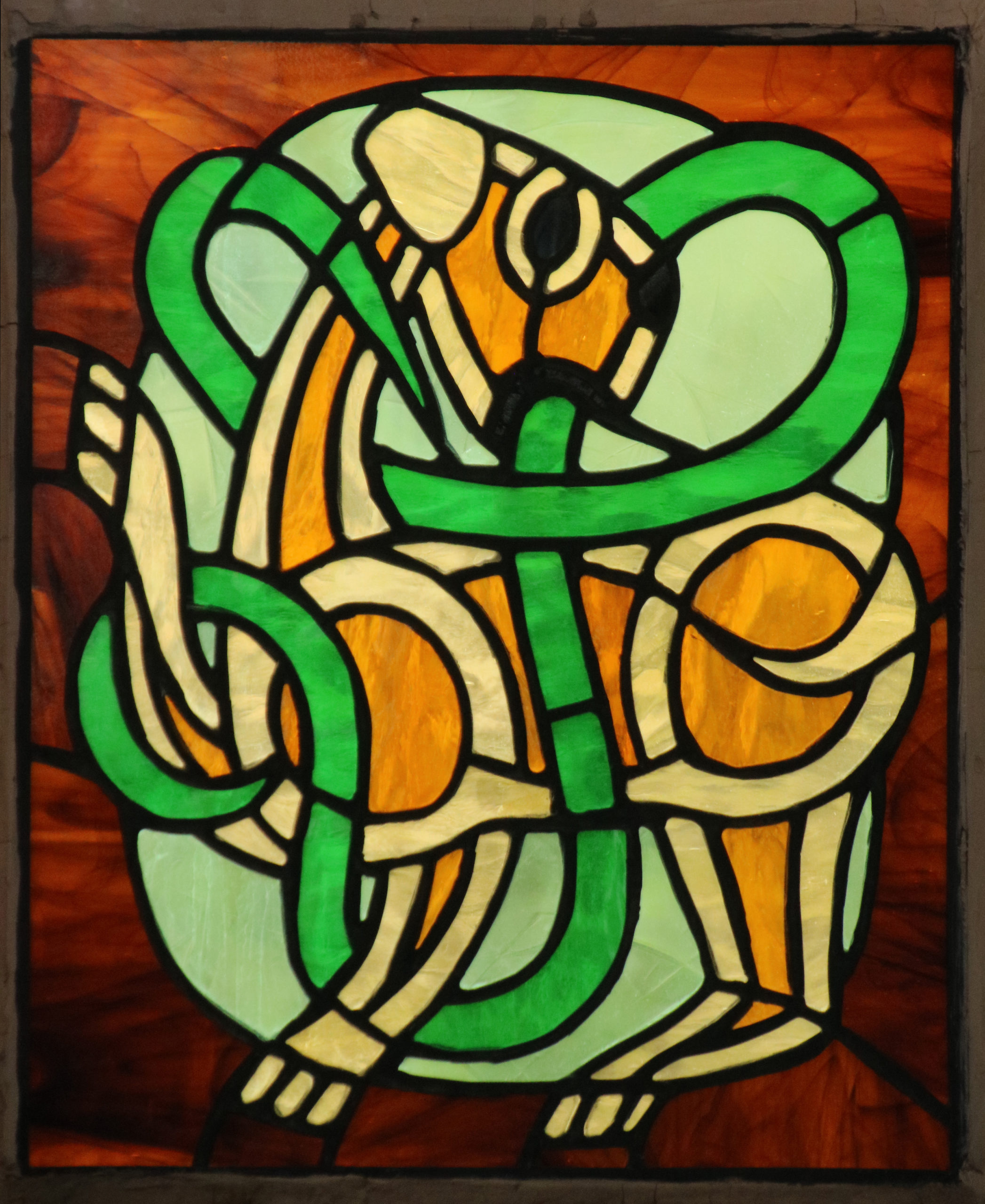
Hazel was a keen photographer with an interest in colour, both scientific and artistic. She became involved in stained-glass making in 1994 when she joined a class at Oxford College of Further Education (now City of Oxford College) as a complete beginner, under the tutelage of distinguished glass artist Paul San Casciani, a Fellow of the British Society of Master Glass Painters. From him she learned the basic techniques of cutting, leading, copper-foiling and soldering, and she and her classmates continued to receive mentorship and attend private workshops with him after his retirement. Hazel also went to a short, but useful and enjoyable, private course on acid-etching and iron oxide painting with Vital Peeters.
Upon her retirement from St Anne’s, she was presented with a symbolic piece of glass by her colleagues in the Senior Common Room to represent the panes of glass she had agreed to design and make for the Library, along with a cheque which she put towards procuring glass for the project. In return, she donated her time and craft to creating the beautiful panels which illuminate the Library today. Beginning in 1997, 59 individual pieces in total were added to Hartland House, almost all of them designed and made by Hazel herself, at times with the assistance of Paul Casciani, and installed by Pat Frisby and Alan Hogg.
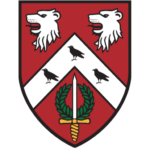
The Designs
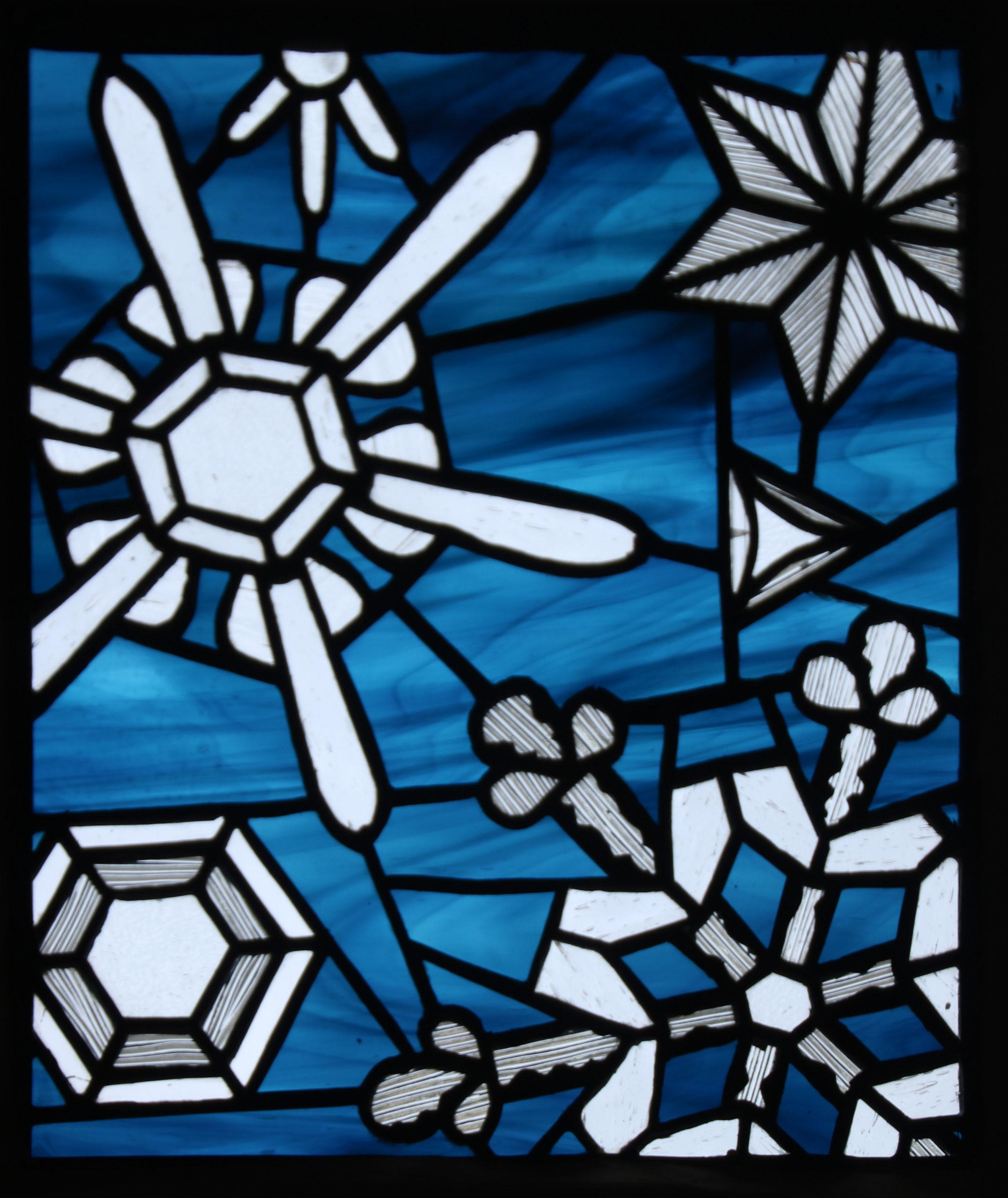
Academic Subjects
The majority of the windows relate to academic subjects taught at St Anne’s. English Literature & Language is represented by panels celebrating Virginia Woolf, William Shakespeare, and the Nordic origins of the English language. The Modern Languages rooms on the First Floor Corridor feature panels on authors of literature in German (Rilke and Goethe) and French (Pascal and Flaubert). The Classics Room, home to literature in Ancient Greek & Latin, and Archaeology and Ancient History contains panels depicting Greek and Roman architecture and ancient coins. The Sciences feature heavily in the Geometrical Shapes series and elsewhere the Concepts and Intellectual Progress series reflect broader themes in their academic setting.
The panels relating to academic subjects were originally housed near to their bookshelves within the Library. While the history of the College is represented in numerous panels, History as an academic subject, along with the social sciences, is unrepresented due to the windows in these sections of the Library being inconveniently high for both measuring the panes and installing the panels.
The last panel was installed in 2014, before the constuction of the Tim Gardam Building. The addition of this building and the moving of collections from Hartland House has meant that some of the panels are no longer situated next to their relevant academic subject area, particularly those themed on the Sciences, whose collections are now housed in the New Library.
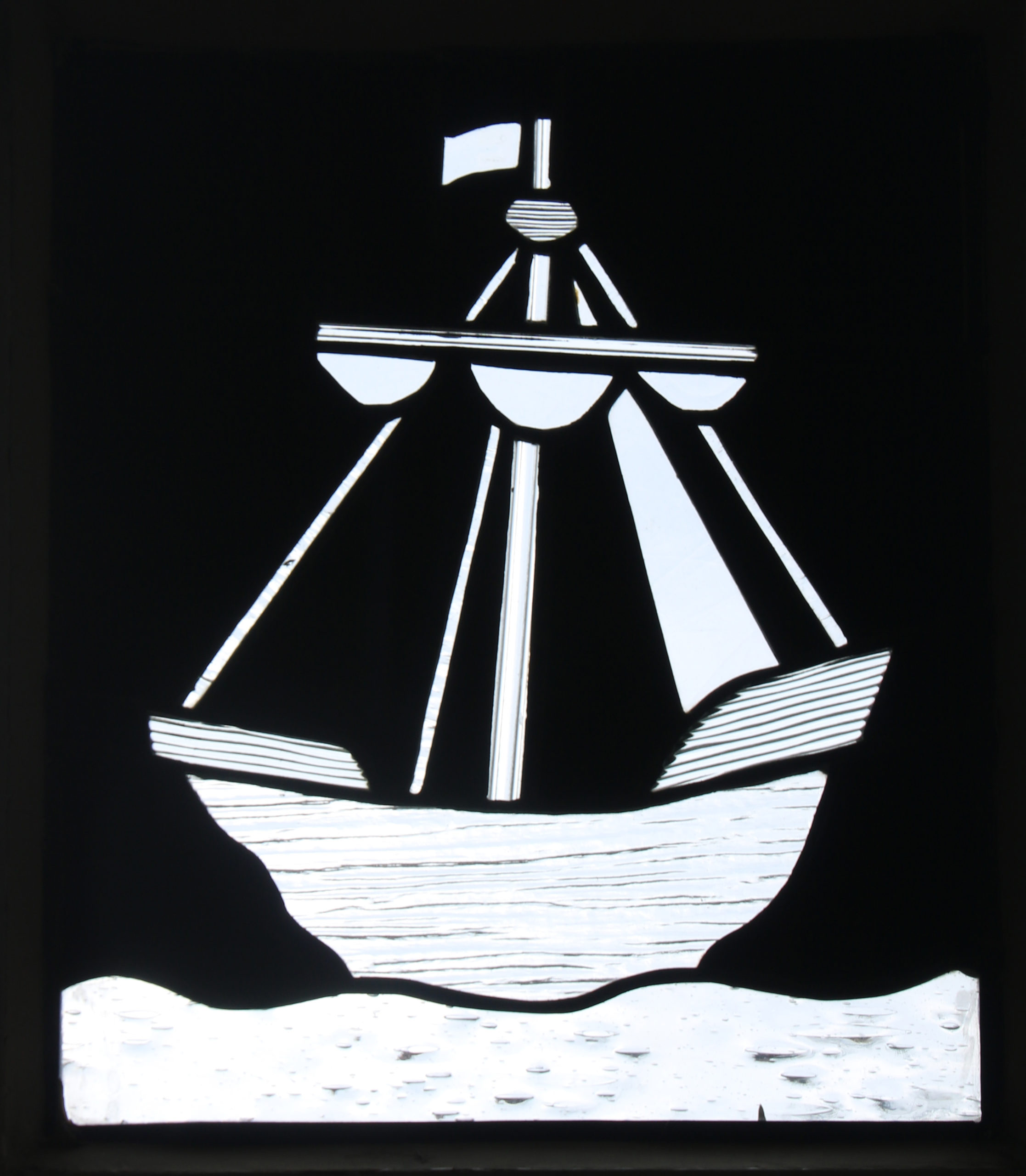
Events and emblems
Events and emblems associated with the College are featured throughout. These include a panel celebrating the granting of our Royal Charter in 1952 and a panel representing the year of the College’s foundation, 1879, and the Association for Promoting the Higher Education of Women in Oxford, from which the College emerged. This was discovered by Hazel’s family and given to the College in 2019 and is yet to be housed.
Heraldic emblems are also included, with partial representations of the crests of academic and political communities to which the College belonged at time of installation (1999-2000) including: St Anne’s itself; the University of Oxford; the City of Oxford; England; the United Kingdom; the European Union; and the United Nations.
People
St Anne’s people are celebrated, including Founding Fellows Annie Barnes, Elaine Griffiths, and Marjorie Reeves, and the Ruth Deech (Principal, 1991-2004).
There are memorials to Junior Members of the College, who were students of Hazel’s and died whilst at St Anne’s – Su Holmes and Anton Tchetvertakov. Jim Stanfield, another Chemistry student of Hazel’s, who died during his tenure as President of the Association of Senior Members, is also remembered.
Windows were installed in appreciaton of gifts made to the College. A window in The New Reading Room, which bears the name Cephalosporin Fund, was made in recognition of the gift, through that fund, by Professor Sir Edward Abrahams, whose purification and subsequent patenting of cephalosporin, allowed him to donate to education and research. Another was made in thanks to Dame Mary Archer, alumna and generous supporter of the College who was a student of Hazel’s, with symbols representing interests and events and places in her life.
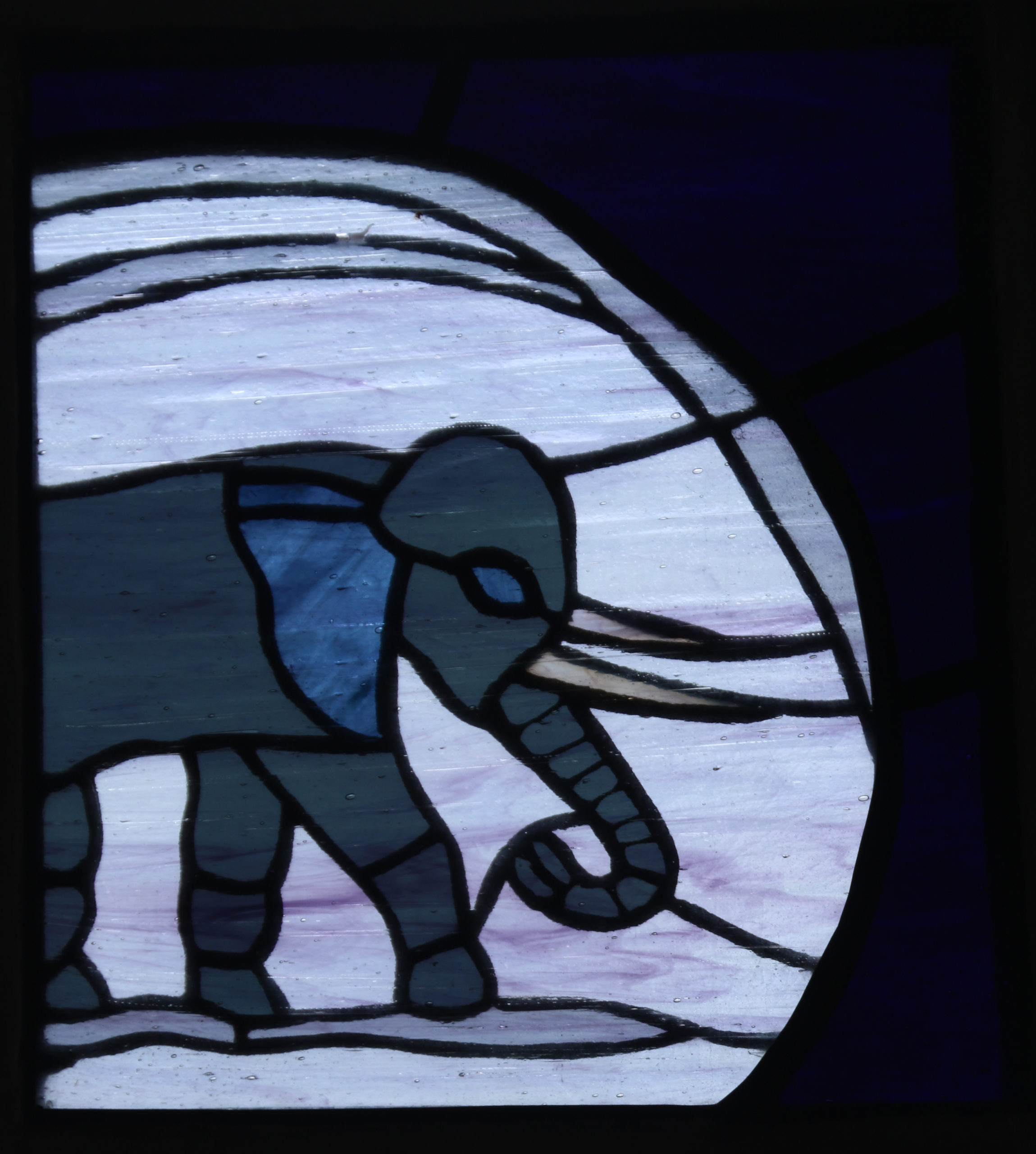
Collaboration
Hazel discussed the subject of each window with Dr. David Smith (Librarian, 1987-2015), and other Library staff over the years also contributed ideas and designs. Hazel herself designed the Charter and Mouse panels, based on ideas from David Smith and Alison Corley (Assistant Librarian), while Abstract designed by Julia Chadwick (Library Assistant) needed no modification and Flowers by Emma Sherratt (Library Assistant) needed only some adaptation to the medium of glass.
Hazel often discussed her designs with Ann Pasternak-Slater (Fellow in English) and other tutors and fellows for designs of panels on the theme of their relevant academic subject. Matthew Leigh (Fellow in Classics) proposed an elephant for the Classics Room, and Anna Gibson (Classics student, 1972) supplied a suitable image after having discussed the subject with Hazel on a chance meeting on holiday in Greece. Ruth Deech (Principal, 1991-2004) approved the design of, and chose the colours for Embryo, which was made to celebrate her Damehood, received in 2002.

Technical Details
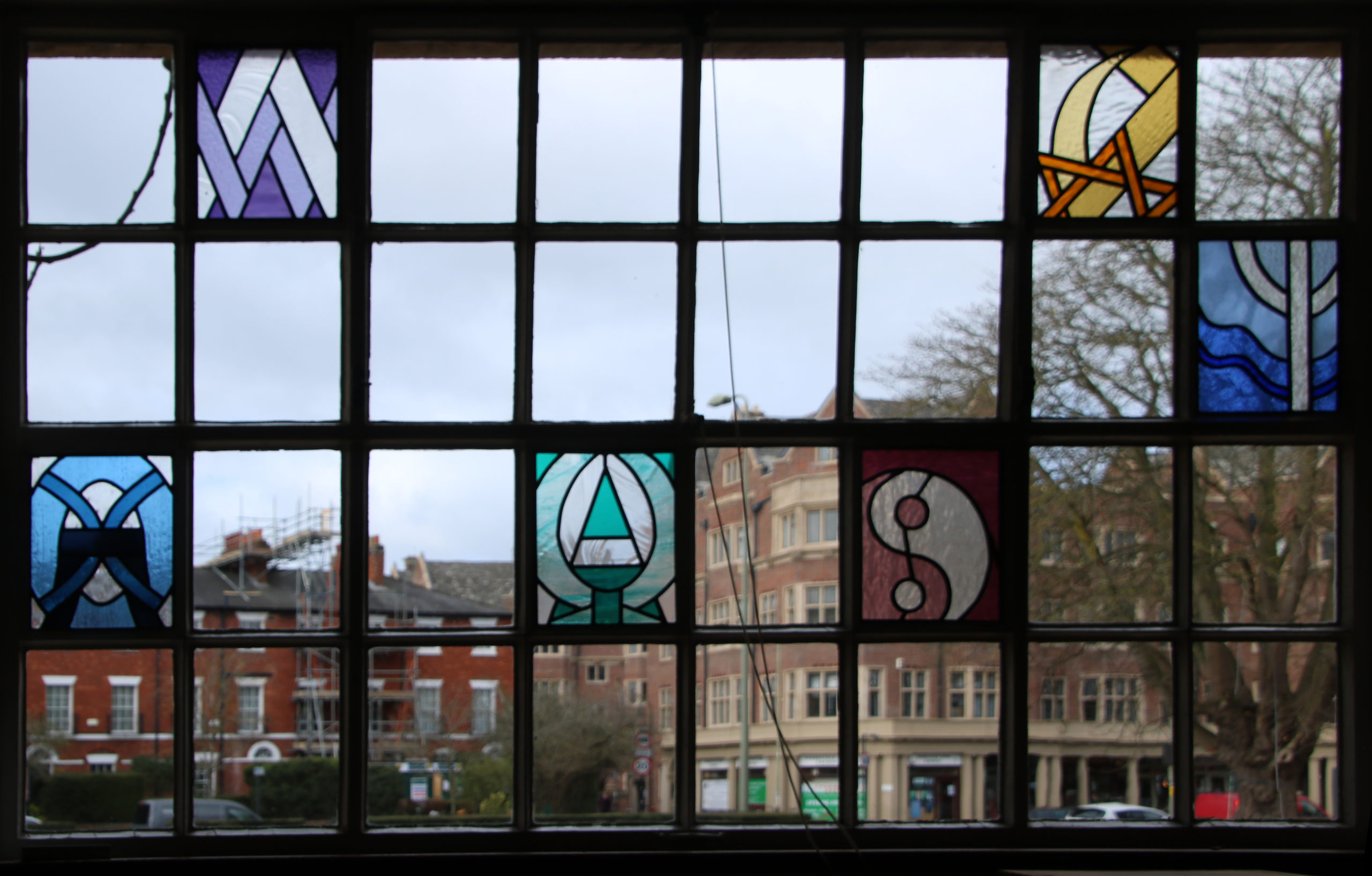
For the simpler panels, such as those in Concepts series, glass pieces were cut and fitted into a net-work of lead strips with an H-shaped cross-section, which were then soldered together where they meet. There must be a space of about 2 mm between the glass pieces, to accommodate the core of the lead strip. This technique is very similar to that used in medieval work, although contemporary glass-makers now have sharper glass-cutters and electric soldering irons.
In more detailed work, as in the Geometrical Shapes series, the pieces needed to be cut with minimal spaces between them, and each edged with narrow self-adhesive copper-foil which slightly overlaps the upper and lower surfaces of the glass. The panel was then assembled like a jigsaw puzzle, and the pieces held together by soldering over all the adjacent copper edges, on both sides of the panel. The technique was probably invented, and was certainly much used, by Louis Comfort Tiffany for three-dimensional work, particularly glass lampshades, from the 1880s onwards.
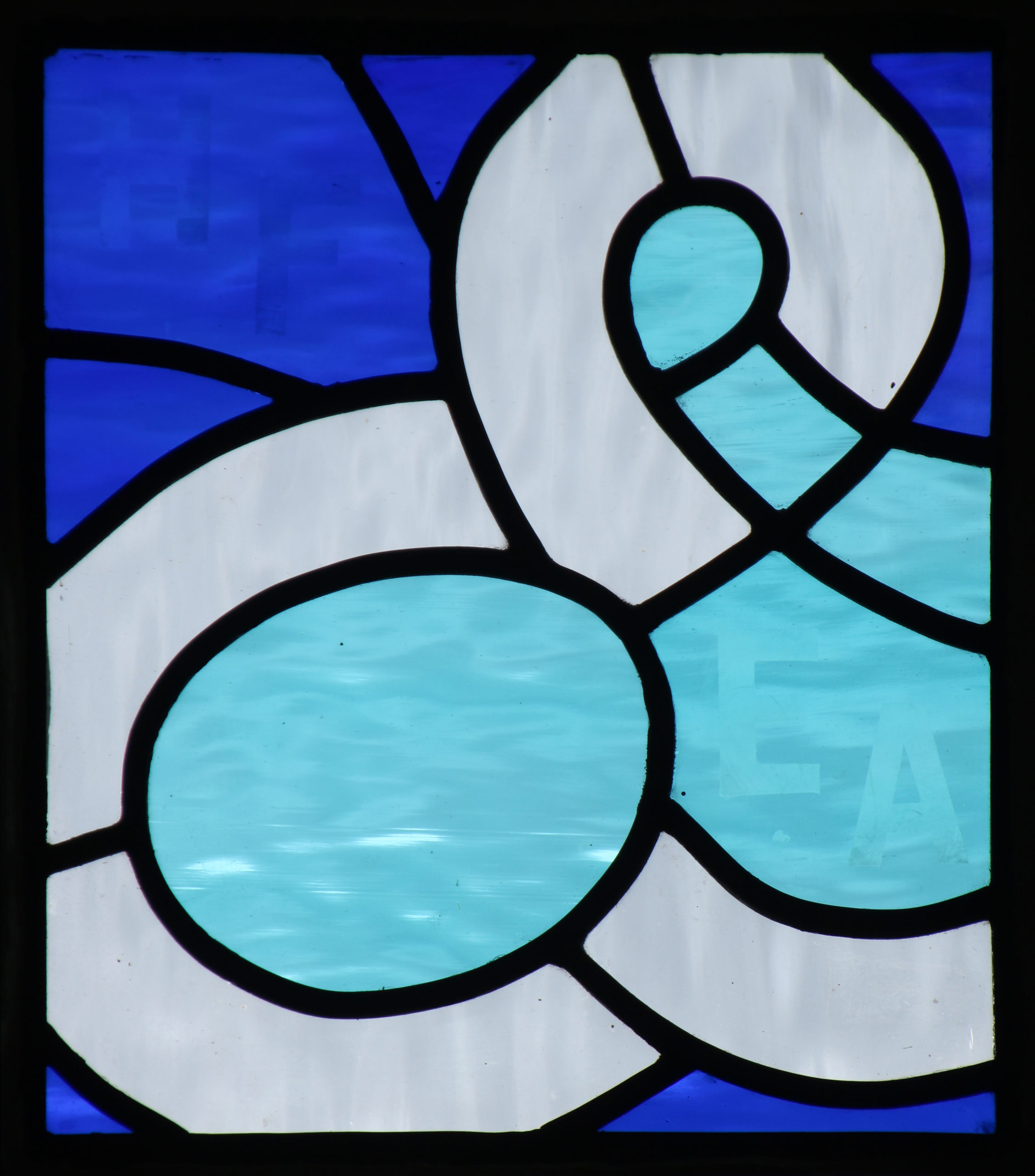
Glass pieces for both techniques are often cut slightly larger than finally needed and their shape was refined by “grozing” (nibbling along the edges with pliers). For copper-foil work, the extra precision required for a good fit was achieved with a grinding wheel.
Most of these panels were made directly by shaping and joining pieces of bought coloured glass; but letters and other details were added to some shaped pieces before assembly. Those in the Communities series were stained by painting the pieces with black iron oxide, and then firing them. The translucent letters on Embryo were acid-etched on to the surface of the glass.
When all the glass was finally assembled it was framed in lead, again fixed in place by soldering. The finished panels (of about 23 x 29 cm) were installed by a glazier, who mounted it inside the existing plain glass pane, which itself was set with putty inside a metal frame. Had it been a wooden frame, it would have less of a challenge to the glazier.

This blog post has been adapted from documentation by Hazel Rossotti, edited and revised by Niall Sheekey (Reader Services Librarian).
Photos by Heather Rossotti.
